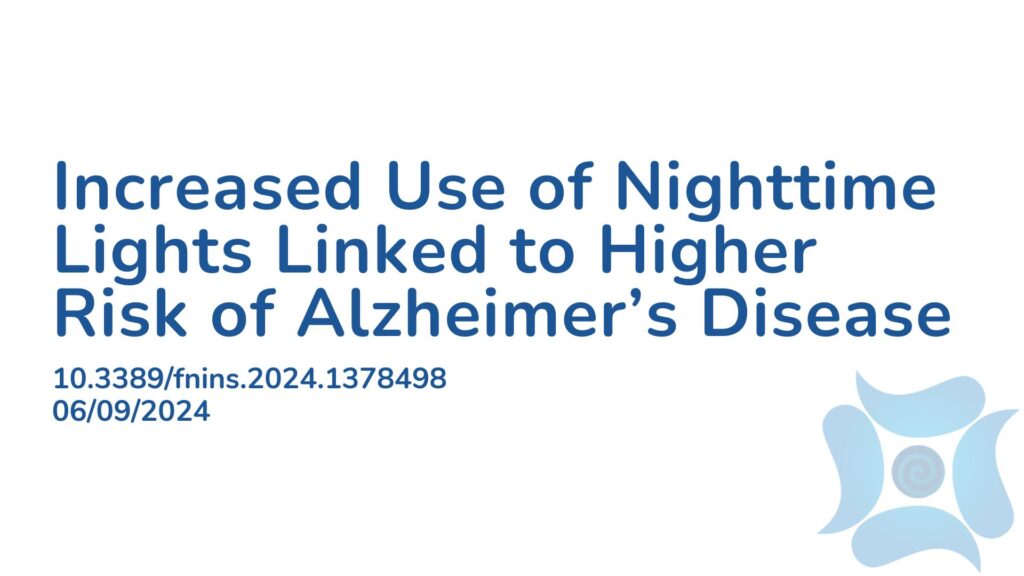Summary:
Artificial lighting, which is the main source of light used today and also known as light pollution, affects up to 80% of the global population. It obscures natural light and may contribute to behavioral, biological, and health issues. Artificial light at night is linked to various health problems, including sleep disorders, obesity, depression, anxiety, memory issues, atherosclerosis, and cancer. However, the impact of light pollution on Alzheimer’s disease (AD), a leading cause of dementia, is not well-studied. Recent research from China and Italy suggests that higher levels of nighttime outdoor light may increase the risk of late-onset dementia, but these findings are limited. This study investigated the relationship between AD prevalence and nighttime light pollution across 48 states of the U.S., using pre-existing data from the Centers for Medicare and Medicaid Services. The analysis showed that increased outdoor nighttime light was associated with a higher prevalence of AD. While conditions such as atrial fibrillation, diabetes, hyperlipidemia, hypertension, and stroke were more strongly associated with AD prevalence compared to nighttime light intensity, nighttime light still showed a stronger association with AD than factors like alcohol abuse, chronic kidney disease, depression, heart failure, and obesity. Additionally, nighttime light exposure was found to have a stronger correlation with AD prevalence in individuals under 65 compared to other disease factors studied. These findings suggest that nighttime light exposure may influence the prevalence of AD, but further research is needed to confirm and understand this potential link.
Abstract:
Introduction: Alzheimer’s disease (AD) prevalence has increased in the last century which can be attributed to increased lifespan, but environment is also important. Exposure to artificial light at night is one environmental factor that may influence AD. Methods: This study evaluated the relationship between outdoor nighttime light exposure and AD prevalence in the United States using satellite acquired outdoor nighttime light intensity and Medicare data. Results: Higher outdoor nighttime light was associated with higher prevalence of AD. While atrial fibrillation, diabetes, hyperlipidemia, hypertension, and stroke were associated more strongly with AD prevalence than nighttime light intensity, nighttime light was more strongly associated with AD prevalence than alcohol abuse, chronic kidney disease, depression, heart failure, and obesity. Startlingly, nighttime light exposure more strongly associated with AD prevalence in those under the age of 65 than any other disease factor examined. Discussion: These data suggest light exposure at night may influence AD, but additional studies are needed.
Article Publication Date: 06/09/2024
DOI: 10.3389/fnins.2024.1378498



